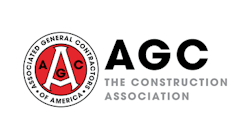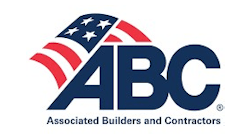When it comes to road building, parking lot construction, or utility trenching, the same principles apply. The subgrade has to meet the appropriate standards before the finished surface can be installed. One of the machines designed to help meet the necessary density numbers that will make for a smooth, long-lasting surface is the compactor, which traces its roots back to ancient Rome.
Racetrack Needs
Founded in 1906, Brannan Sand & Gravel is one of the older paving companies in the Denver, CO, area. Its fleet consists of 325 pieces of equipment, including 37 rollers ranging in size from an Ingersoll-Rand DD24 to a Rex 355. “We do private, commercial, municipal, and state contracts. The size of the job can range from $1,000 to $10 million,” declares Theran Olsen, operations manager. So when it was necessary to turn a parking lot into a Grand Prix racetrack, Brannan Sand & Gravel was prepared for the challenge.
Says Olsen, “Parking lots are built to drain water and park cars, not necessarily to be smooth at high speeds, which can cause a problem for vehicles going 180 miles per hour. In that case we had to meet with the general contractor and the Denver Grand Prix representatives and help smooth out the area in the parking lot where the track was going to be installed. We also developed a new asphalt mix designed to withstand the G forces of Indy racecars making corners.”
In this instance, Paveset, a subsidiary company of Brannan that specializes in computerized paving, surveyed elevations every 25 ft., at each side of every pass the paver had to make, and the Paveset computer adjusted each side of the screed up or down. The paver and the accompanying rollers ensured that all necessary elevations were met, and when they were done, that part of the parking lot had become a full-fledged racetrack.
Olsen notes that timing is especially critical with larger jobs. “We built the parking lots at Invesco Field for the Denver Broncos two years ago, laying down 75,000 tons of asphalt while working between games and other scheduled events. We did the grading and laid the asphalt at various times during the year-and-a-half construction of the stadium, and we had approximately 25 pieces of equipment excavating, grading, paving, or rolling.
Olsen states that everything has to be tested to pass moisture and density requirements. He confides that most of the jobs they build require the subgrade to be plus or minus one-tenth of a foot in accuracy. “We scarify the top 2 to 12 inches, add the proper amount of moisture, compact the subgrade, then fine-grade for paving. Soils in the Denver Front Range vary dramatically in the different parts of town. The owners usually have a geotechnical engineering firm working for them, and we have our own lab. So the two labs test side by side, but the geotechnical firm does the sampling prior to us getting the job to determine the moisture content required to achieve density.”
Correcting Errors
One practice Brannan uses to avoid conflicts is to have its superintendents check the job sites to make sure the grade is correct before moving its crews in. “If the job isn’t correct at that time, we’ll let the owner make the decision whether someone else will correct it or whether we’ll do it as an add-on charge,” Olsen explains. “It goes both ways. Sometimes the excavator is too busy [so] we’ll finish up their work, and sometimes they’ll come back and finish it up.”
He recalls a 2-ac. parking lot on the north side of Denver. “We found it wet, and the soil was unstable because of the additional rains since the excavation contractor had done his work. We notified the owner that the subgrade was unstable. However, they wanted us to complete the work as the contract specified, which we did. On this particular job, after we completed as contracted, the subgrade was still unstable. The owner and city inspector decided to dig out soft spots and replace the dirt with 6 inches of asphalt.”
Brannan Sand & Gravel followed the work on the subgrade with a paver, two smooth drum rollers and a pneumatic roller. Olsen says the subgrade resembled a patchwork quilt, but when they had finished placing the two lifts of asphalt over the stabilized subgrade, “the lot looked beautiful, and the customer had a good, solid parking lot. It cost extra money, but in the long run it was a good investment.” Accuracy on asphalt thickness was a typical plus/minus one-eighth of an inch.
The firm upgrades its equipment on a regular basis and utilizes the slower winter months for thorough preventative maintenance (PM) with each piece of equipment, including those 37 rollers. These two simple steps help ensure that the company is ready to take on any job, whether it’s a parking lot for the Pepsi Center where the Denver Nuggets (NBA) and the Colorado Avalanche (NHL) play or Coors Field, home of the Colorado Rockies (MLB); a subdivision; a highway; or someone’s driveway.
Not a Static Industry
Although outsiders might not see much difference in today’s rollers, manufacturers and operators report that the machines continue to improve in performance year after year. “It’s not a static industry,” declares Steve Wilson, product manager for heavy equipment for Compaction America in Kewanee, IL. “Contractors are looking for more production, better performance, and greater reliability in order to meet the expense of doing business. They want greater horsepower and less fuel consumption.” He adds that a greater proportion rents before buying a new machine. “They like to test the waters.”
He also notes that companies tend to specialize in either aboveground projects or trenching, but few try to cover both aspects. “In most cases aboveground projects, such as parking lots, take larger machines, while the trenching contractor needs a machine much smaller in width, whether it’s a trench compactor, a vibratory plate, or a ride-on roller.”
He emphasizes that during the last half-dozen years the vibratory roller has been a growing market. “You get the best of both worlds because you can use it as a vibratory on initial material compaction and then shut off the vibration and use it as a roller when you’re dealing with final compaction or surface finish requirements.” Furthermore, special compaction control systems help ensure that the operator does the job correctly, and they provide the documentation to show that he did. “The operator can download the information and give it to the site supervisor.”
In addition, today’s rollers, of whatever brand, offer the contractor the weight class and drum width he needs for the specific kind of work he does.
Still, there’s room for contractors to improve their machine’s workability. One example involves Park Construction in Morrisville, NC. Lynn Williams, chief mechanic, reports that the company specializes in trenching, and it needed some way to make it possible to work a bucket and a roller together. So he took his Action Equipment Inc.’s design, which arrived at his shop with the bucket chained to the roller, and welded the two pieces together. “Now we can move dirt with the bucket, then roll it without the operator having to get off the machine.” Their lineup of field equipment includes eight rollers, five excavators, two track loaders, and three rubber-tire loaders. “Sewer and water projects are the company’s specialty. We also find with the newer-style rollers that we don’t have to replace bearings as often. Link-Belt bearings can handle 100,000 pounds. They’re real workhorses. We get better compaction with Action Equipment’s wheel roller than with the vibrating trench rollers we used to have in the fleet.”
As any contractor knows, site repairs can be a real pain. For Williams, it was not unusual to spend three hours in travel plus three hours on the site replacing bearings
The company keeps vibrators on hand just in case density proves a challenge. Otherwise, static compactors make for faster finishing of a cleanup. “We use the roller to compact but keep the bucket on for removing any excess,” Williams continues. “Our trenching crew includes one excavator laying pipe in, another backfilling anywhere from 30 inches to 8 feet, while a third compacts as he fills. If it’s a really deep trench, we have another machine for compaction and cleanup. Once the grass starts growing, you can’t tell we’ve been there.”
As he looks over the new equipment, he notes that while he was changing bearings every six weeks on the older machines, he expects the new-style bearings will last at least a year. “We might buy another older-style light roller for smaller jobs where we can’t put the weight. I’ll just have to keep an eye on the bearings and their shafts. The main thing with rollers is to keep the grease in and the dirt out because they will wear out.”
While other companies specifically manufacture self-propelled compactors, Action Equipment’s specialty is manufacturing the roller itself to fit existing equipment, explains Keith Petersen, owner and president. Speaking from his Denver headquarters, Petersen adds, “Besides compacting over the top of a pipeline, it can handle a large lift of material at a time. Still, the contractor has to know his soils, but 24 to 36 inches of lift is not uncommon, and some even talk of 48-inch lifts with these wheels.”
Because this kind of roller can be mounted on anything from a small skid-steer up to a 120,000-lb. excavator, there’s no need to have anyone in the trench during backfill. “It’s a simple compaction tool that helps you process material as you compact. If you need to add water or dry material, you can do that as you compact. You avoid any chances of voids in your material or in bridging your compaction.”
He reports that it’s being used for mining land reclamation. “The Army Corps of Engineers up in Leadville spent two months trying to get compaction with self-propelled machines or achieve compaction with [Caterpillar] D8 dozers, but they kept spinning out because of steepness of grade.” So the company built an 8-ft. compactor and mounted it in place of the teeth on the D8, which then was able to navigate the slopes and cure the compression problem in just a few days.
More Pipeline Contractors Speak
“I was in high school when my brother Pat started Pate Construction here in Pueblo, Colorado, in 1973,” reports. Dave Pate, vice president of operations. “Now we do about $30 million a year. Some of it is concrete work, but 95% of what we do is pipeline trenching, and we have 15 compactors helping us with that.” Brands include Terex, Ingersoll, and Sakai. “Nine of those compactors are the Rex 335, which is like a tricycle. Here in Colorado, the static third wheel runs down the center of the ditch and is able to compact the clay soil correctly. If it’s dry we have to add a lot of moisture, so we mix and compact at the same time.” For sandy areas, the company uses vibratory rollers.
“We’ll take on jobs ranging from $20,000 to a $5 million subdivision. We’ll use the larger Rex roller with the mainline crew and service crew because we’re using just one compaction machine versus needing a couple of rollers behind every excavator in operation.” The company also works year-round, although Pate admits it might shut down for a week due to the cold. Still, in its 30 years, it has never lost two weeks in a row.
Noting that getting the right soil in the trench is a balancing act, Pate adds that they’ve had to dig as deep as 20 ft. “It takes a dinosaur-looking lift, and we come down in the ditch so we can get the vibratory roller on it. That machine weighs 40,000 pounds and has enough weight to compact.”
He notes that the compactors are relatively simple machines. “Some of our older machines have close to 10,000 hours with very little breakdown or extra maintenance problems. The older machines don’t even have a steering wheel on them. There are just two handles for running the machine forward and backward.”
Finding Operators
So what does a roller need in an operator? “It takes wanting to work,” Pate frankly responds. “Typically we’ll get a kid who grew up on a farm in the eastern plains of Colorado and will work a summer, then go to college. When he comes back for the next summer, he brings a buddy along. If you hire them on the buddy plan, they’ll stick it out.” This helps ensure that when the pressure’s on, Pate Construction can meet the deadline because the focus is on getting the job done, not on finding and training new hires. “Some do quit thinking it’s better somewhere else, but they find it isn’t so they come back.
“The guy who comes in early in the season and bugs me gets the job. I’ll look at applications, but those who really want the job find the right person to talk to, and that’s the whole key. They have to get through the front door and be pleasant to the people behind the front desk.” But it works both ways. After all, no company likes to lose an expert roller operator. Pate Construction also strives to promote from within, which helps keep its 180 employees happier than they would be otherwise. And experienced employees help keep the 200 pieces of equipment in operation. Experienced operators are aware of problems before they develop into disasters, giving the shop crew time to fix the machine.
When it comes to disasters, another Colorado-based contractor, Al Bragg, who partners with brother Jake in Bragg Excavation, says that’s what got him into pipeline excavation work. “I went to school to get a degree in ag business because [my] father had a feed lot and ranch. Then the bottom fell out of the cattle market in 1977. I needed something to do, so I took our old backhoe into town here along the Front Range.” Now the company has 90 people handling $18 million a year in business.
Continues Bragg, “We’re a pipeline contractor for water, sewage, and storage. We’ll do 500,000 feet in a year, with lines running from 4 to 72 inches. I have five compactors, one of them vibratory. They last quite a long time, so I’m not afraid to buy them, but the challenge is coming up with the cash. We’ve become accustomed to getting a loan locally then getting the machines out of Denver and paying the loan off in anywhere from three to five years.”
He also likes the technology that permits the company to put 2-3 ft. of dirt over the trench before beginning the compaction operation. “The operator’s running on virgin ground on each side of the ditch and can handle a ditch 43 to 48 inches deep, which is pretty typical in this area. Sometimes we’re able to do the work in just two passes.”
Speaking of his vibratory machine, he comments, “I really like it. I like the cost of the machine. It’s reliable and does a really decent job. We have one because it’s easier to get into tight points with a vibratory machine. Water services need just 4 to 5 feet of trenching, so we need a lighter machine. We either use a lighter machine or a compaction wheel on an excavator to get the compaction we need to satisfy the regulations.”
But it’s not all easy-going in his area. “There is a lot of hard rock,” Bragg says. “The way we look at rock is if we can’t dig it with a 100,000-pound excavator, it’s rock. That’s where we’ll start blasting. We do have to get good bedding for the line, with that bedding 12 inches below where the line will lie to 12 inches above. Then we can talk about packing.” But blasting doesn’t turn rock into bedding material. Much of the resulting material is 8 in. or larger. So Bragg Excavation uses its rollers to further crunch the material while it’s atop the ground before moving it into the trench.
“We did a subdivision of 200 home sites in Fort Collins in the summer of ’02 where we ran into a large amount of shale running 4 to 18 feet deep. Our large excavator could not dig this stuff. It’s one thing to not make good production and another to not make good production and beat your machine up as well. We had to get a blasting permit, then hire Yetner out of Golden, Colorado. They blasted 2,000 linear feet.” Fortunately, that portion of the project was relatively isolated so blasting was not a problem, and Bragg Excavation had other tasks to handle while the dynamite people did their work.
“It was diggable after that, but we had thousands of yards of 6- to 10-inch pieces unsuitable for backfill. So we rolled over them and broke them up into maximum 4-inch chunks. Then as we filled, we watered it to the desired moisture content.”
Concerning the rent/own debate, he comments, “We look at what’s available out there. We do a lot of leasing in order to keep our financial ratios intact. There are times when we need a machine and lease is better. Our equipment suppliers are great about allowing us enough time to test a new machine, to decide if we want it after all. Then that’s when we’ll decide whether to lease or buy.”
He also admits that as a younger company, Bragg Excavation has yet to acquire older machines that still have enough life for occasional use. “We see our competitors able to attach a compaction wheel on a backhoe that has 7,000 to 10,000 hours on it. They’re utilizing a machine that’s old but still not quite ready for the boneyard. We’ve got a few more years to hit that line.”
Regardless of the debate about which might be the best roller, contractors and manufacturers agree that today’s technology is well ahead of what the Romans did to compact soils. No, it wasn’t a barrel filled with sand or water; it was a herd of sheep, which was driven back and forth on the moist soil. Their relatively tiny feet would more thoroughly tighten the soil, giving the Romans a roadway more suitable for vehicles of the day.








